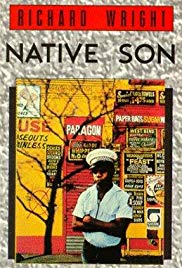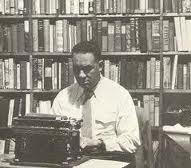NATIVE SON
SUBJECTS — U.S./1945 -1991, Diversity/African-American & Illinois;
SOCIAL-EMOTIONAL LEARNING — Justice; Friendship;
MORAL-ETHICAL EMPHASIS — Responsibility; Respect; Fairness.
AGE: 15; MPAA Rating — PG;
Drama; 1986; 112 minutes; Color.
There is NO AI content on this website. All content on TeachWithMovies.org has been written by human beings.

SUBJECTS — U.S./1945 -1991, Diversity/African-American & Illinois;
SOCIAL-EMOTIONAL LEARNING — Justice; Friendship;
MORAL-ETHICAL EMPHASIS — Responsibility; Respect; Fairness.
AGE: 15; MPAA Rating — PG;
Drama; 1986; 112 minutes; Color.
Give your students new perspectives on race relations, on the history of the American Revolution, and on the contribution of the Founding Fathers to the cause of representative democracy. Check out TWM’s Guide:
TWM offers the following worksheets to keep students’ minds on the movie and direct them to the lessons that can be learned from the film.
Film Study Worksheet for ELA Classes and
Worksheet for Cinematic and Theatrical Elements and Their Effects.
Teachers can modify the movie worksheets to fit the needs of each class. See also TWM’s Movies as Literature Homework Project.
Bigger Thomas, a culturally deprived and immature young man from Chicago’s black ghetto, is hired as a chauffeur by a wealthy white family. It is a golden opportunity to escape a ghetto life of unemployment and crime. But the daughter of the family is home from college. She and her boyfriend, youthful rebels, want to be friends with Bigger. How should he react? It all ends in tragedy and ashes. The film is based on the novel by Richard Wright.
Selected Awards: 1987 Independent Spirit Awards: Best Male Lead (Love).
Featured Actors: Victor Love, Mary McGovern, Carroll Baker, Oprah Winfrey, Matt Dillon, John McMartin.
Director: Jerrold Freedman.
“Native Son” gives us a picture of ghetto life, the wide gulf between the disadvantaged (in this case, poor blacks) and the affluent, how difficult it is to cross that gulf, and how easy it is to panic and accidentally kill someone. The novel is a classic. Good readers, ages 14 and up should be encouraged to read the book before they see the film.
SERIOUS. Bigger inadvertently smothers Mary, the daughter of the family that employs him and that is trying to help him. He then laboriously shoves the corpse into the family’s furnace and burns it. These scenes are extremely disturbing. This is not cookie cutter violence but a realistically portrayed death of a person and the destruction of her corpse. We thought seriously about not recommending the film because of this scene. However, “Native Son” allows children to see what life is like for the very poor and disadvantaged, how hard it is for people from different classes to understand each other, how easy it is to make mistakes that can be fatal, and the naiveté of many young left-wing college students.
Describe for your child the plight of inner-city minority children and the Great Migration. See the Helpful Background section for the latter. Ask and help your child to answer the Quick Discussion Question.

The “Great Migration” was the movement of millions of Southern blacks to the large cities of the North looking for relief from racism and seeking better jobs and schools. The “Great Migration” began during the First World War when jobs opened up in war production industries. It continued through to the 1960s. 85% of blacks lived in the South in 1890. By 1960, that number had been reduced to 42%.
The voting power of the black migrants to the Northern cities helped to change the political landscape of the nation. In 1928, Oscar DePriest from Chicago became the first black man to serve in the U.S. Congress since 1901. Northern blacks supported politicians who would vote for Civil Rights legislation.
Labor organizers and people with left-wing political views were often labeled as “Reds” in an effort to link them to communists and discredit them. Other films that refer to the red scares are: The Grapes of Wrath, Matewan, Fat Man and Little Boy and, by analogy, The Crucible, High Noon and Inherit the Wind.
1. See Discussion Questions for Use With any Film that is a Work of Fiction.
2. Why did Mary and Jan make Bigger feel uncomfortable?
3. Why did Bigger hate Mary? Did he kill her because he hated her?
4. What mistakes did Mary make that contributed to her death?
5. How do you think you would have reacted to Mary if you had been Bigger or to Bigger if you had been Mary?
1. If you were the judge and the jury in this case, what sentence would you give to Bigger? Why?
2. Why are more black and other minority men executed in the U.S. than white men in relation to their numbers in the population and in relation to the number convicted of murder? What does this say about justice in the U.S.?
3. When Mary and her friend tried to befriend Bigger it didn’t really work. There was no real friendship there. Why was that? Is becoming someone’s friend the same as treating him with respect?
4. Should Mary have asked Bigger to lie for her to her parents about taking her to the University? Mary said she wanted to be Bigger’s friend. Is this something a friend would ask another friend to do or was Mary trading on her superior social status and power over him?
5. Did Mary and Jan want to be friends with Bigger, or were they just using him for their own psychological needs?
Discussion Questions Relating to Ethical Issues will facilitate the use of this film to teach ethical principles and critical viewing. Additional questions are set out below.
(Treat others with respect; follow the Golden Rule; Be tolerant of differences; Use good manners, not bad language; Be considerate of the feelings of others; Don’t threaten, hit or hurt anyone; Deal peacefully with anger, insults and disagreements)
1. Why was Bigger embarrassed to be at the restaurant with Jan and Mary?
2. Should Mary and Jan have insisted that Jan drive the car or that Bigger eat with them?
[See additional questions in the “Friendship” section above.
(Do what you are supposed to do; Persevere: keep on trying!; Always do your best; Use self-control; Be self-disciplined; Think before you act — consider the consequences; Be accountable for your choices)
3. Was Bigger willing to take responsibility for his actions?
4. After he killed Mary, what should Bigger have done? What would have happened to him if he had turned himself in? When questioned about this, Bigger replied, “It wouldn’t have made no difference. She was white and I was black.” Was he right as a practical matter or as a matter of morality?
(Play by the rules; Take turns and share; Be open-minded; listen to others; Don’t take advantage of others; Don’t blame others carelessly)
[See questions in the “Justice” section above.]
The book Native Son is a classic and should be read by children before graduating from high school.
This Learning Guide was last updated on December 17, 2009.
TWM offers the following worksheets to keep students’ minds on the movie and direct them to the lessons that can be learned from the film.
Film Study Worksheet for ELA Classes and
Worksheet for Cinematic and Theatrical Elements and Their Effects.
Teachers can modify the movie worksheets to fit the needs of each class. See also TWM’s Movies as Literature Homework Project.
“I say that the best way to address this issue is to address it forthrightly, and straightforwardly, and embrace the complicated history and the complicated presence of America. On the one hand, that’s right, slavery, and segregation, and racism, and white supremacy is deeply entrenched in America. At the same time, there has been a tremendous alternative tradition, a tradition against slavery, a tradition against segregation, a tradition against racism.
I mean, after all in the past 25 years, the United States of America has seen an African-American presence. As we speak, there is an African-American vice president. As we speak, there’s an African- American who is in charge of the Department of Defense. So we have a complicated situation. And I think the best way of addressing our race question is to just be straightforward, and be clear, and embrace the tensions, the contradictions, the complexities of race in American life. I think we need actually a new vocabulary.
So many of the terms we use, we use these terms over and over, starting with racism, structural racism, critical race theory. These words actually have been weaponized. They are vehicles for propaganda. I think we would be better off if we were more concrete, we talked about real problems, and we actually used a language that got us away from these overused terms that actually don’t mean that much. From Fahreed Zakaria, Global Public Square, CNN, December 26, 2021
Give your students new perspectives on race relations, on the history of the American Revolution, and on the contribution of the Founding Fathers to the cause of representative democracy. Check out TWM’s Guide: TWO CONTRASTING TRADITIONS RELATING TO RACISM IN AMERICA and a Tragic Irony of the American Revolution: the Sacrifice of Freedom for the African-American Slaves on the Altar of Representative Democracy.
* we respect your privacy. no spam here!